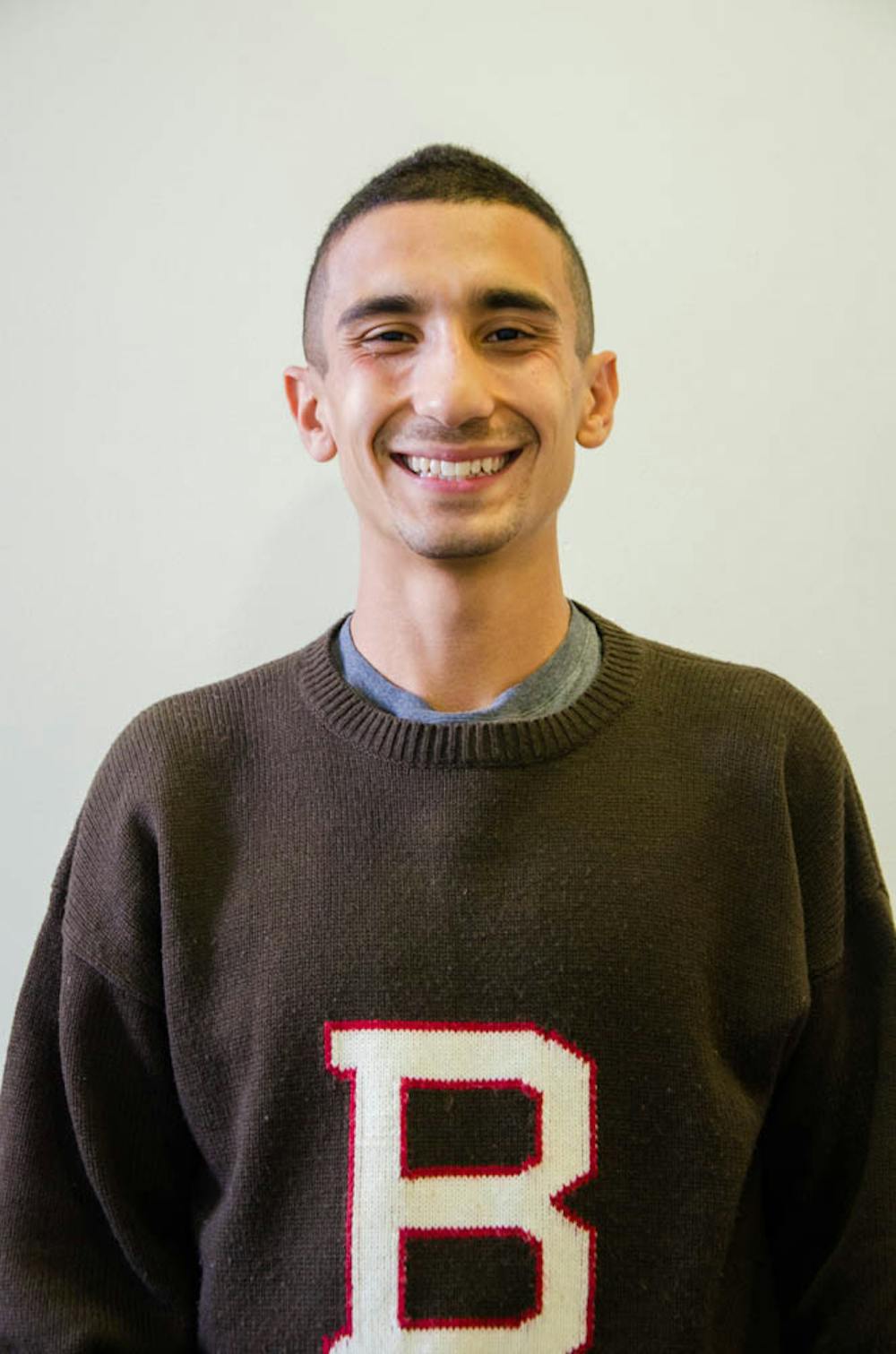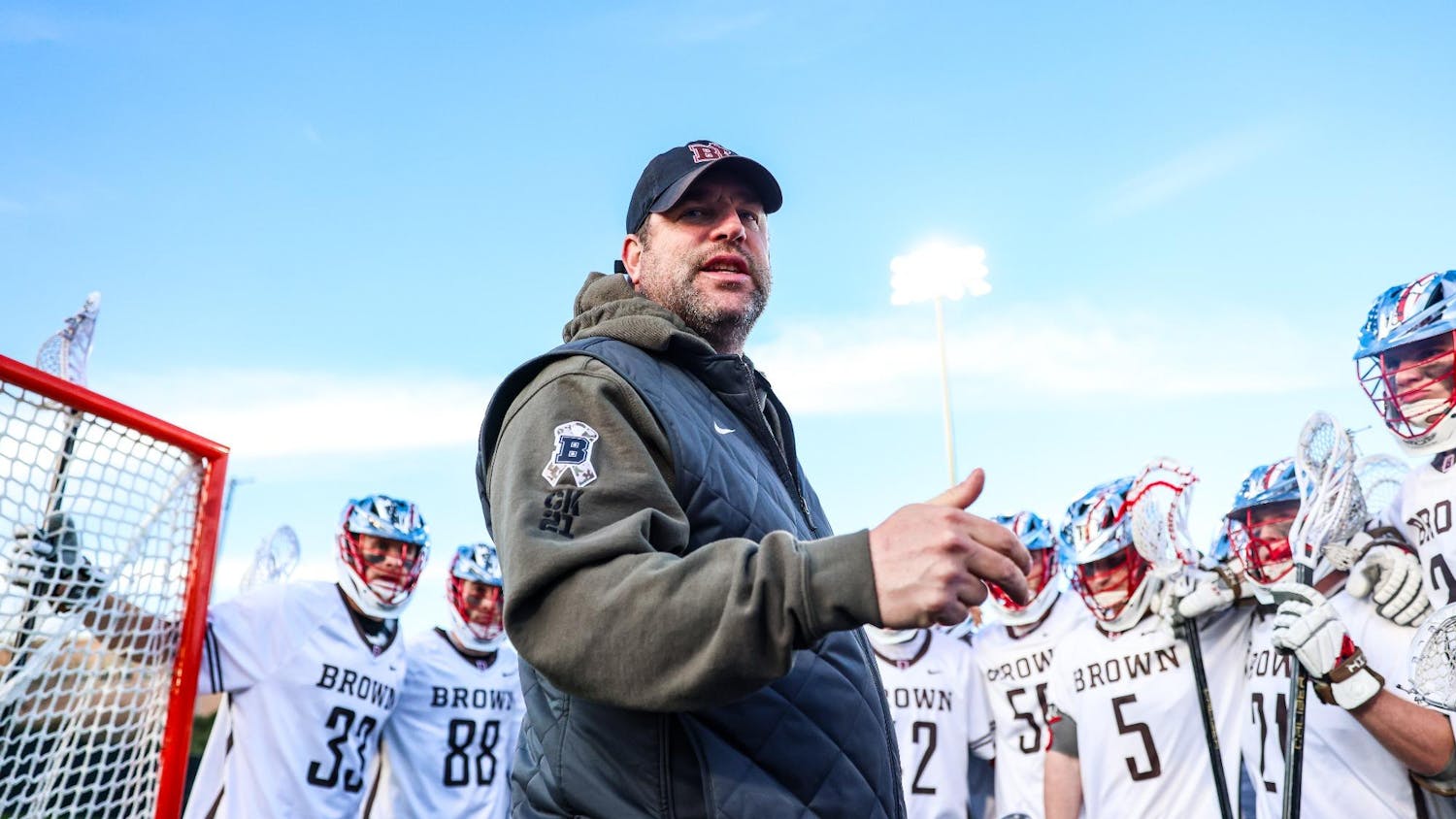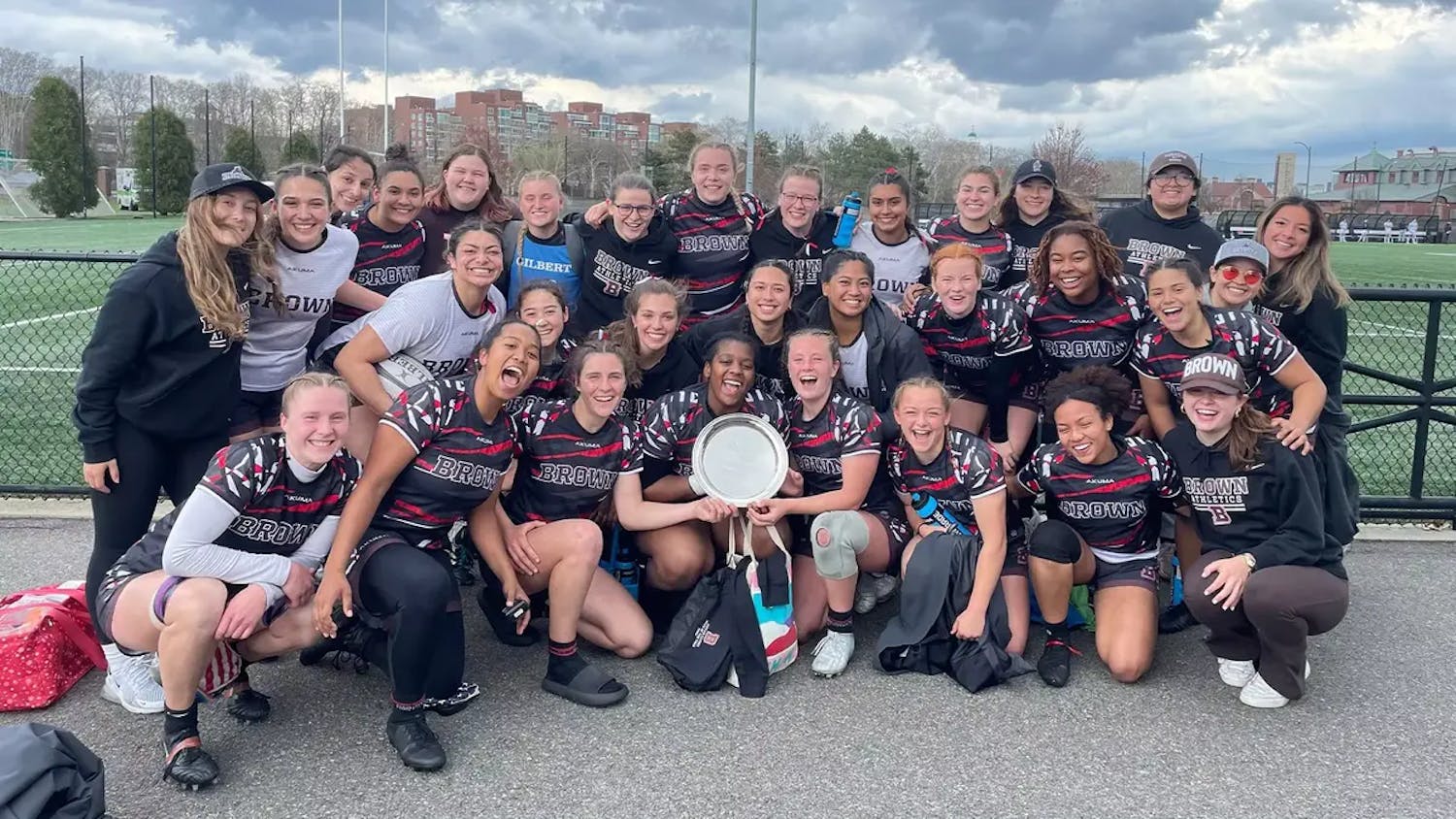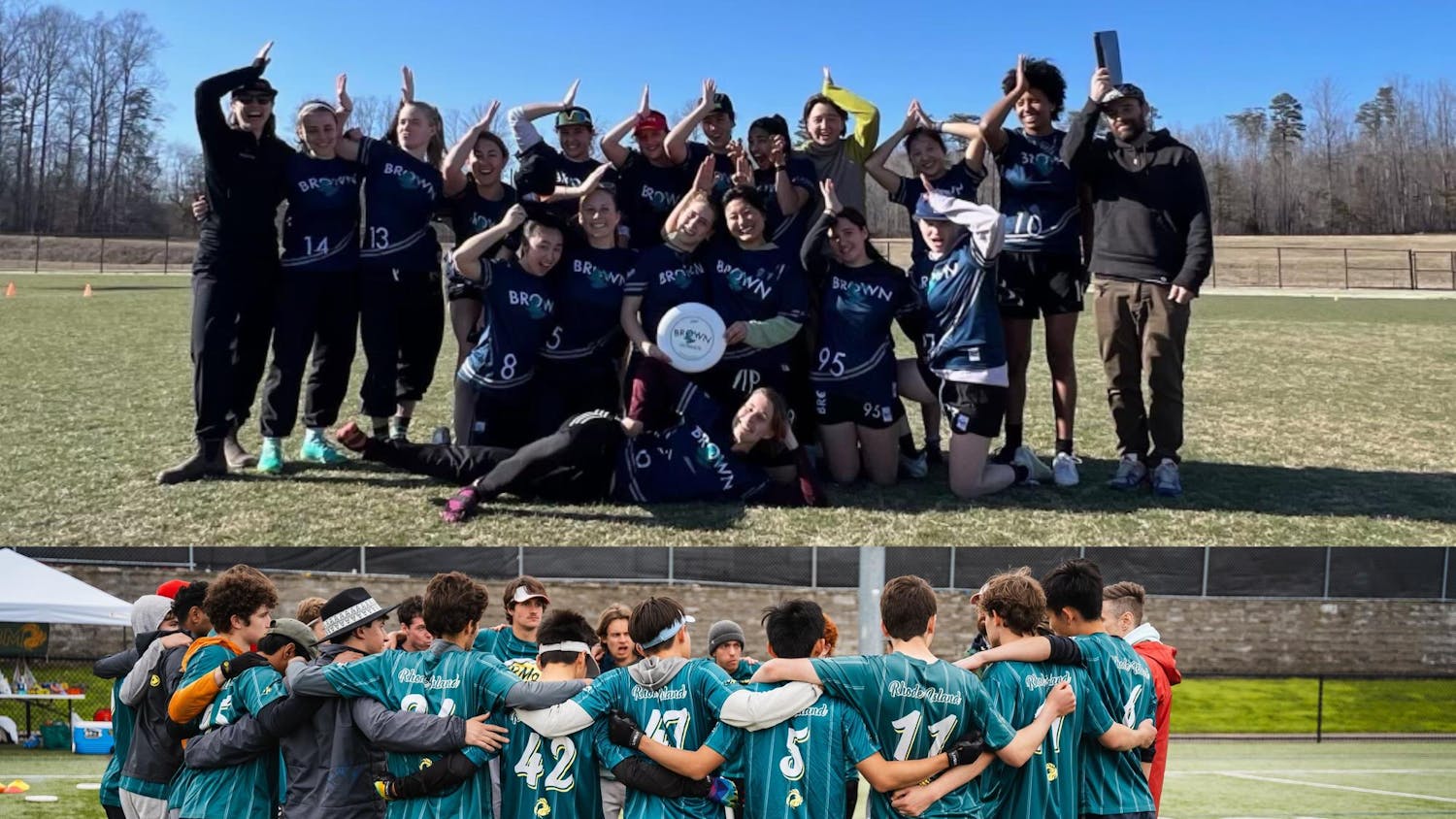Most people can remember running a timed mile in gym class, but few can fathom what it would be like to cover the distance in under four minutes. To put such a feat into perspective: There are more than 560 billionaires living in the United States today, but only 510 Americans in history have broken four minutes for the mile. On Saturday, Martin Martinez ’18 became the 509th American sub-four miler, recording a time of 3 minutes, 59.38 seconds at the Boston University Valentine Invitational — good for sixth place in a field that included four professional runners. This record-breaking run made Martinez the first athlete in Brown history to crack four minutes on an indoor track and the first to do so since Greg Whiteley ’89 broke four minutes outdoors.
The race was Martinez’s second breakout performance of the indoor season. At the Boston University Terrier Invitational in January, the senior captain won his heat in the 3000-meter race in 7:59 — the second-fastest time in Brown history. Martinez’s marks in the mile and 3000 are the best in the Ivy League this season, making him a favorite to win one or more individual titles at the Ivy League Heptagonal Indoor Track and Field Championships later this month. For his recent exploits on the track, Martinez has been named The Herald’s Athlete of the Week.
Herald: Congratulations on becoming the 509th sub-four-minute miler in American history. How does it feel to join that exclusive club?
Martinez: It hasn’t quite set in. As a distance runner, it’s one of those things that you always think of. When you’re 15, 16 years old, everyone has the goal of being a sub-four miler. I was lucky to be in a good race and be fit when everything came together.
What signs in your training indicated that you were ready to run under four minutes?
The last few years, (Head Coach Tim Springfield and I have) felt that we’ve been at a fitness level where, given the right race, we could do it. At the first BU meet, we broke eight (minutes) for 3000; I felt good doing that. I knew that I was in a position where I could potentially run sub-four in a few different ways. I just had to get in a race where I had an opportunity to do it.
Walk us through the race.
The heat was a big mix of talent levels, with a few pros and a few collegians. Going into the race, I was kind of nervous. I didn’t know if I was ready to run with Nike Oregon Project runners. I just went in there with the mindset that I wasn’t thinking about time; I was just thinking about competing.
At about 1000 meters in I was starting to hurt. Then with 200 to go, I looked up at the clock and saw 3:29, so I was like, “We gotta buckle down here, run a 30(-second last lap).”
How did your coaches and teammates react?
There was a five-second delay waiting for the time to pop up on the screen and see officially if it was sub-four. Then it was like, “Holy Crap!”
I ran over to Tim and gave him a big hug, which is kind of funny looking back. There were some guys on the back bend, so I went over and gave them some high fives. The whole night and the next day, I was getting so many messages from alumni and different guys congratulating me, sharing the experience a little. Because I was the first to do it for Brown, I think a lot of guys I’d trained with felt a connection.
You and a few teammates spent time training in Mexico over winter break. How was the running down there?
It was actually in my grandmother’s hometown. Her house is at about 5,000 feet (above sea level); the idea was to get some nice training at altitude.
We were in rural Mexico, so it was farmland. It was all dirt roads. We had access to a 400-meter dirt track that was pretty nice. It was great running. I hadn’t been there in 10 years — since I was about 13. My grandfather had recently passed away, so I figured it would be nice for us to see my grandmother and make sure she wasn’t by herself.
A labrum tear in your hip kept you out of competition from summer 2015 until fall 2016. While you were sidelined, did you ever doubt that you would regain your previous level of fitness?
It was a long climb back. … Prior to my 3000 two weeks ago, I hadn’t (set a new personal record) in two years. I had a big year my sophomore year, then I was injured. Then the year I came back I didn’t PR. Even last cross country season was kind of a disappointment.
There were a lot of moments when it was tough. After surgery, I didn’t run for four or five months. It’s tough to go through the rehab and be on the sideline. I don’t think I doubted that I’d come back and give it a shot, but there was a lot of doubt that I could come back at the same level and get back to where I was prior to surgery.
You were originally slated to graduate in May 2017. Why did you decide to stay on and compete for a fifth year?
I had the option of graduating in normal time and using my remaining eligibility at a different school, like Ned (Willig ’16) and Will (Sheeran ’16) when they went to the University of Michigan. They’d also had some injuries and decided they wanted to use their eligibility at a more traditional state-style school.
When I was injured, I talked with Tim and decided I wanted to finish my NCAA eligibility with the team and the coach I started with. Looking back, I’m happy I made that decision. The coolest part about this has been breaking four with Brown and being the first one to do it.
Which events will you run at the Ivy League Heptagonal Indoor Track and Field Championship? Will you race in both the 3000 and the mile?
It’s still up in the air. There’s some strategy to where you put your guys.
A number of college coaches recruited you out of high school. Why did you choose Brown?
Brown was the only Ivy I was looking at. I was mostly looking at schools in the Midwest — University of Illinois, Iowa State (University) and (University of) Notre Dame. But it really wasn’t much of a contest; I was set on Brown the whole time. Tim kind of sold me, and the opportunity to go to an Ivy League school was a really big thing for me.
What are your plans for running — and life in general — after Brown? Do you hope to extend your competitive track career beyond graduation?
Right now, I’m just trying to focus on this season. A lot of it depends on how the rest of the year goes — where my marks end up falling. I think most likely I’ll be done after the end of this year. Ultimately, a few years out, the plan is to apply to law school.
Note: This interview has been edited for length and clarity.





